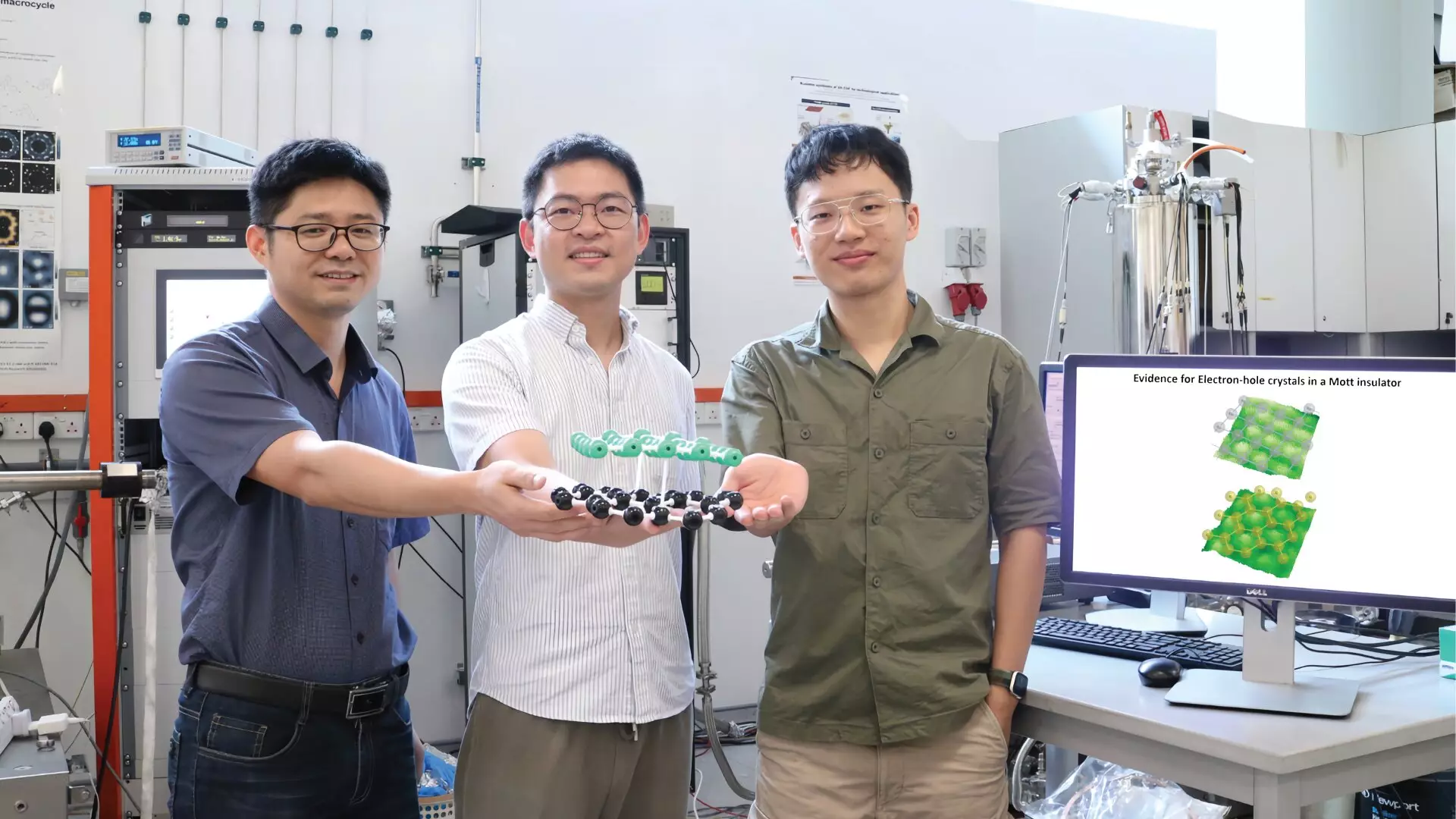In the realm of quantum physics, few phenomena captivate researchers’ imagination as much as the intricate interactions between electrons and their positive counterparts, known as holes. When the intricate dance of these charged particles aligns with the lattice structure of a material, it can give rise to what is referred to as an electron crystal. This organized arrangement holds immense potential for quantum simulations, showcasing not just the nature of these particles, but also a glimpse into the future of quantum computing technologies. The formation of these crystals demonstrates the potential for collective behavior that may lead to revolutionary advancements in electronic devices and materials science.
However, the journey to harnessing the power of electron-hole interactions has not been straightforward. The dynamic relationship between electrons and holes presents challenges, especially when they recombine rapidly, undermining the stability required for practical applications. Researchers have historically sought methods to separate these particles while still allowing them to coexist within one system. Classical solutions involve layering materials or using specifically designed structures, yet such approaches often lack the empirical evidence needed to validate the existence of these states in a natural material context.
A Quantum Leap in Mott Insulators
A remarkable breakthrough emerged from a research initiative at the National University of Singapore (NUS), led by the innovative minds of Associate Professor Lu Jiong and Professor Kostya S. Novoselov. They successfully forged and directly visualized electron-hole crystals within a Mott insulator made from Alpha-ruthenium(III) chloride (α-RuCl3). Mott insulators, with their unique properties, serve as fertile ground for studying electronic interactions due to their ability to maintain insulating behavior while allowing electron mobility under specific conditions. This research, published in *Nature Materials*, sheds light on the controversial yet groundbreaking concept of coexisting electrons and holes forming stable structures, thus fostering excitement throughout the scientific community.
Utilizing advanced scanning tunneling microscopy (STM), the researchers were able to refine their observations at the atomic scale. STM, a technique that has proven indispensable in studying conductive materials, faced challenges with insulators. Nevertheless, the researchers cleverly circumvented this limitation using graphene, a material just a single atom thick, which conducts electricity efficiently. By integrating graphene with α-RuCl3, they created a pathway for electrons to navigate while illuminating the deeper electronic structure of the Mott insulator beneath.
Visualizing Quantum Orderings
The ability to visualize intricate arrangements of electrons and holes in real time is akin to unveiling the secrets of a hidden world. The researchers identified two distinct ordered patterns at varying energy levels, referred to as the lower Hubbard band and upper Hubbard band energies of α-RuCl3. Each of these patterns exhibited unique periodicities and symmetries—a groundbreaking realization that could inform both theoretical understanding and future applications in quantum technology.
By manipulating carrier densities within the material using electrostatic gating, the team achieved a remarkable feat: the direct visualization of phase transitions between these orderings. This unprecedented observation hints at the profound implications of electron-hole dynamics, revealing that these particles can spontaneously reconfigure based on their environmental conditions. For the first time, the underlying nature of these orderings as crystal-like formations—crafted from both electrons and holes—has been elucidated.
The Implications for Computing and Physics
As researchers delve deeper into the world of doped Mott insulators, the project at NUS not only amplifies the dialogue surrounding electron-hole crystals but also opens a gateway to innovative applications in quantum computing. The implications of being able to manipulate these crystalline formations are vast. Imagine materials that can transition swiftly between distinct states, potentially leading to faster and more efficient computational processes.
Furthermore, the ability to create materials that simulate complex quantum phenomena could revolutionize our understanding of physics itself, providing insights that may otherwise remain elusive. The observations made by the NUS team mark a pivotal moment not just for material science but also for the broader understanding of quantum interactions, bridging the gap between theoretical constructs and practical application. The quest to master electron-hole crystals signals a new dawn in the intricate interplay of material science and quantum technology—one that could reshape the future landscape of computation and beyond.
The immediate future holds promise. As Associate Professor Lu Jiong fervently expressed, the next steps lie in exploring how we can consistently control these crystalline formations with electrical signals. Each new discovery fortifies the foundation of a burgeoning field that thrives at the intersection of innovative thought and groundbreaking experimentation, propelling humanity toward an era rich with quantum possibilities.

